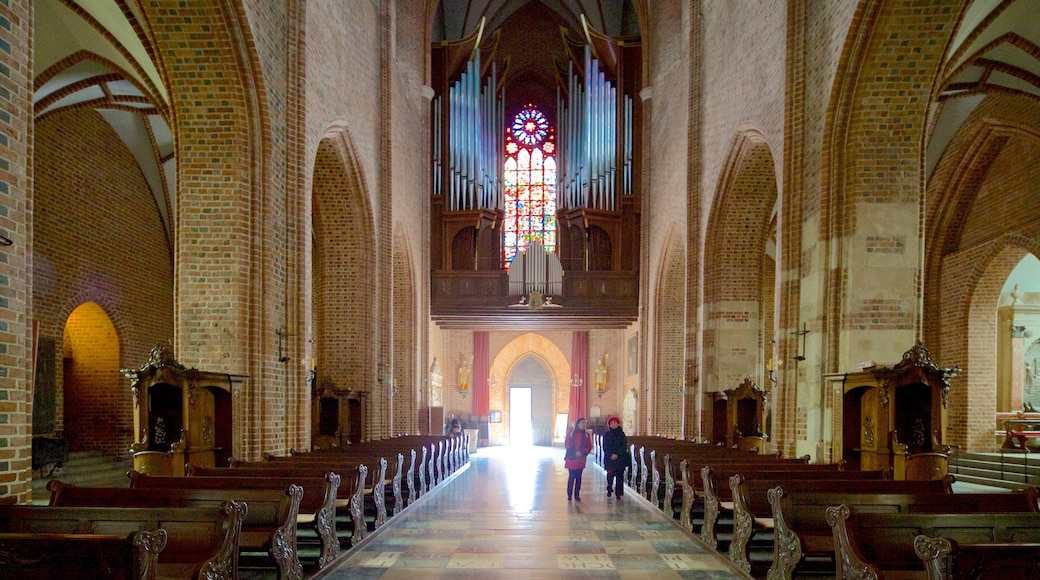The Archcathedral Basilica of St. Peter and St. Paul, often known simply as Poznań Cathedral, is the oldest cathedral in Poland and the burial site of some of the country’s oldest rulers. Admire the valuable art and artifacts housed in the cathedral’s interior and venture into its crypt to see the remains of the early Romanesque building that once stood on the site.
First built in 968, the cathedral has been destroyed, rebuilt and remodeled numerous times over the centuries. After significant damage during the 1945 battle to liberate Poznań, a large fire revealed some of its earlier Gothic elements. This discovery led to the cathedral’s rebuilding in the Gothic style you see today. As you enter through the Gothic portals of the cathedral’s front façade, look for the striking bronze door decorated with scenes from the lives of St. Peter and St. Paul.
The interior of the cathedral is surrounded by twelve chapels. Locate the Renaissance-era tombstones of the Górka family and Bishop Benedykt Izdbieński in the Chapel of the Holy Sacrament. Note the sarcophagi of early Polish kings Mieszko I and Bolesław Chrobry in the Golden Chapel. This chapel also holds 19th-century statues of the two monarchs created by German sculptor Christian Rauch.
Examine the high altar, which features a multi-paneled polyptych depicting Our Lady surrounded by 14 female saints. Note the Gothic and early Renaissance bronze tomb slabs mounted on pillars and various chapel walls throughout the cathedral these were created in the workshop of Hermann and Peter Vischer.
Inside the crypt, see the remains of the early pre-Romanesque and Romanesque incarnations of the cathedral. A 10th-century baptismal font here is believed to have been used to baptize the first Polish sovereign.
To reach the Archcathedral Basilica of St. Peter and St. Paul, take the tram to the island of Ostrów Tumski, which is east of Poznań’s city centre. The cathedral is open daily, although tourists are requested not to visit during Mass. Pay an admission fee to enter the crypt. Exploring the rest of the cathedral is free.






